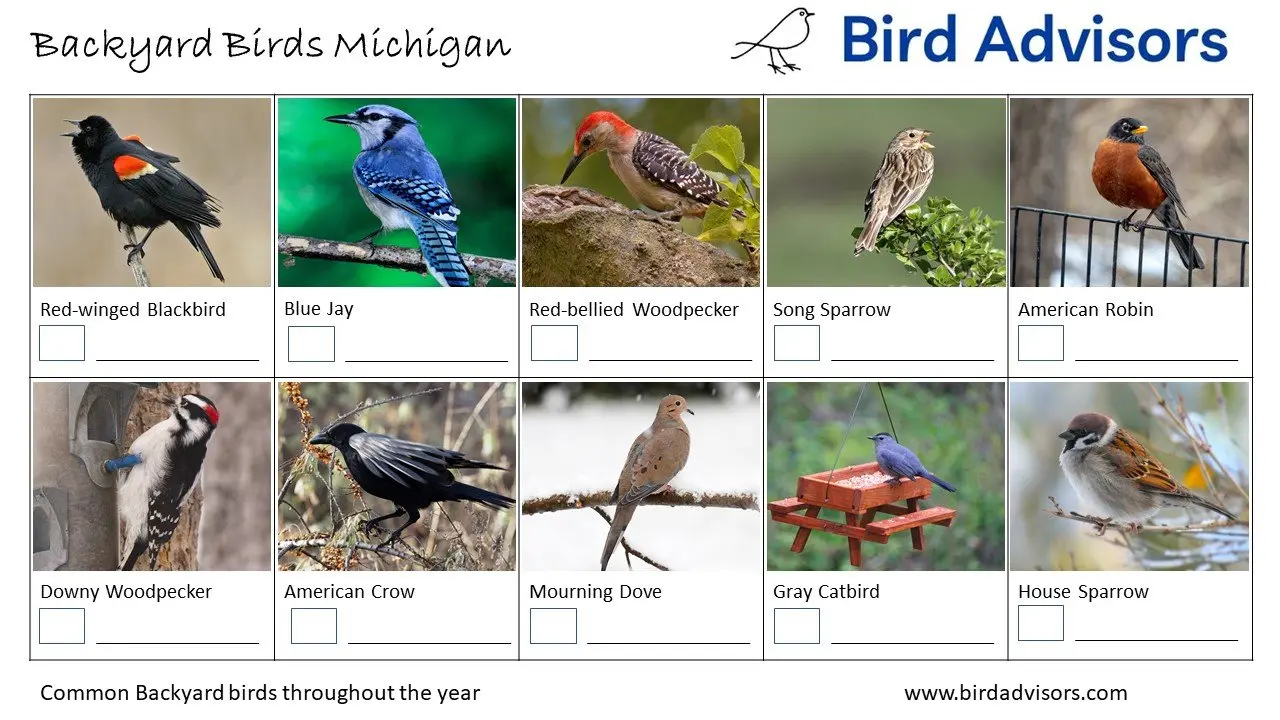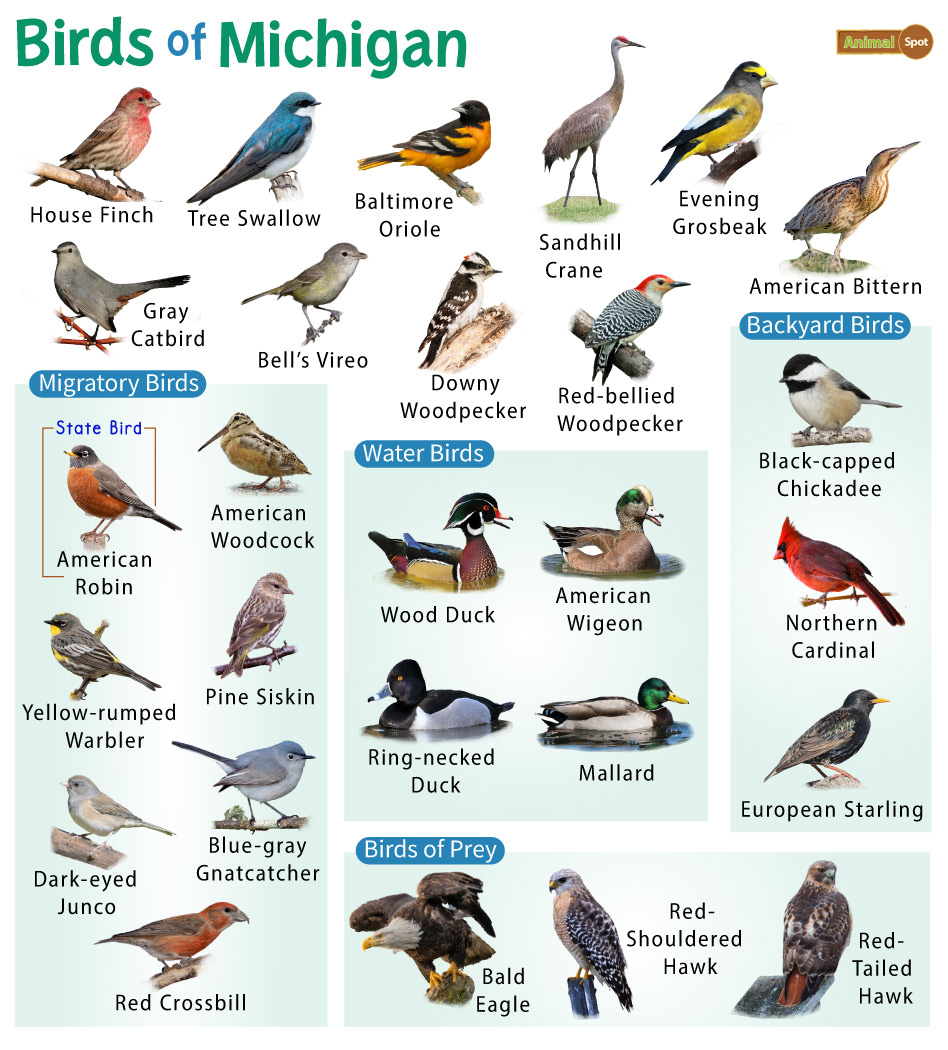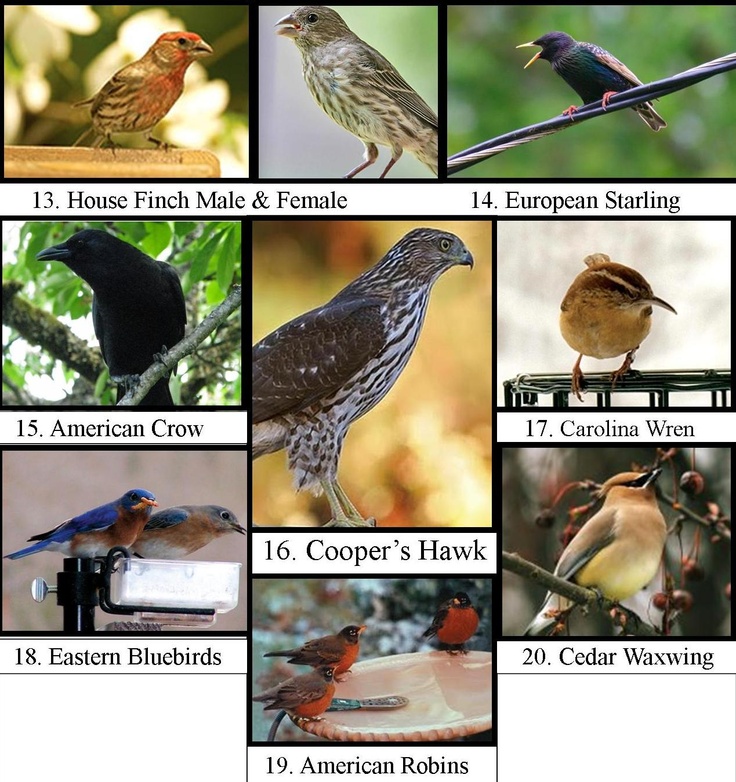Michigan is a haven for bird lovers, with a wide variety of species that visit bird feeders throughout the year. The Black-capped Chickadee takes the lead as the most common feeder bird in the area. But it’s not just the Chickadee that graces these feeders, as there are many other fascinating birds to watch. To get a better understanding of the top 10 feeder birds in Michigan, there are two videos available that provide an overview. From the vibrant red of the Northern Cardinal to the melodic song of the Song Sparrow, each bird species is described in detail, including their appearance, habitat, and feeding preferences. And if you’re wondering what to offer them at your feeders, the article covers that too. So, for those seeking a dash of joy and a chance to observe the beauty of nature, attracting these common birds to your backyard in Michigan is a must.
Black-capped Chickadee
Appearance
The Black-capped Chickadee is a small bird with a distinctive black cap and bib that contrasts with its white cheeks. It has a gray back and wings, and its underparts are a pale buff color. This charming bird measures about 5 to 6 inches in length and weighs about 9 to 14 grams.
Habitat
Black-capped Chickadees can be found throughout Michigan, residing in a variety of habitats including gardens, woodlands, and parks. They prefer areas with mature trees and shrubs, as well as plenty of places to find insects and seeds.
Feeding Preferences
The Black-capped Chickadee feeds on a variety of food sources, including insects, seeds, berries, and fruit. During the winter months, when insects are scarce, they rely primarily on seeds and berries for their sustenance.
Preferred Food Options at the Feeder
To attract Black-capped Chickadees to your feeder, consider providing them with black oil sunflower seeds, nyjer seeds, and suet. These birds are often seen flitting around feeders that offer a mix of these food options.
Northern Cardinal
Appearance
The Northern Cardinal is a beautiful bird with a vibrant red plumage and a distinctive crest on its head. The male sports the iconic red color, while the female is a more subdued brown, with some reddish highlights. These birds are medium-sized, measuring about 8 to 9 inches in length.
Habitat
Northern Cardinals can be found throughout Michigan, inhabiting a range of environments such as forests, woodlands, and suburban areas. They are especially fond of thick shrubbery and dense vegetation.
Feeding Preferences
Northern Cardinals have a diverse diet that includes seeds, berries, fruits, and insects. They often forage on the ground, using their strong beaks to crack open seeds and nuts.
Preferred Food Options at the Feeder
To attract Northern Cardinals to your feeder, consider offering sunflower seeds, safflower seeds, and cracked corn. These birds are also known to enjoy the occasional fruit or mealworm treat.

Red-winged Blackbird
Appearance
The Red-winged Blackbird is a medium-sized bird with a glossy black plumage and bright red and yellow shoulder patches on the male. The female has a more subdued brown coloration with streaks of black. These birds measure about 7 to 9 inches in length.
Habitat
Red-winged Blackbirds are commonly found throughout Michigan, particularly in wetland areas such as marshes, swamps, and the edges of lakes and ponds. They prefer environments with tall grasses and reeds.
Feeding Preferences
Red-winged Blackbirds primarily feed on insects, including beetles, grasshoppers, and dragonflies. They also consume a variety of seeds, berries, and grains.
Preferred Food Options at the Feeder
To attract Red-winged Blackbirds to your feeder, consider providing them with black oil sunflower seeds, cracked corn, and mealworms. These birds are known to be attracted to feeders that offer a mix of seeds and insects.
American Goldfinch
Appearance
The American Goldfinch is a small bird with bright yellow plumage and a distinctive black cap on the male. The female is a more subdued yellow color with olive-brown wings and tail. These birds measure about 4 to 5 inches in length.
Habitat
American Goldfinches can be found throughout Michigan, often residing in open fields, meadows, and gardens. They are also frequently seen in areas with thistle and other types of tall weeds.
Feeding Preferences
The American Goldfinch primarily feeds on seeds, particularly those from various types of plants such as sunflowers, thistles, and asters. They also consume insects, especially during the breeding season when they need the extra protein for their young.
Preferred Food Options at the Feeder
To attract American Goldfinches to your feeder, consider offering them nyjer seeds (also known as thistle seeds) and sunflower hearts. These birds are particularly fond of these food options and will flock to a feeder that provides them.

Mourning Dove
Appearance
The Mourning Dove is a medium-sized bird with a slender build and a long, pointed tail. These birds have a soft gray-brown plumage with a lighter underside. They measure about 9 to 13 inches in length and have a wingspan of about 17 to 18 inches.
Habitat
Mourning Doves can be found throughout Michigan, often inhabiting areas with open fields, farms, woodlands, and suburban areas. They are adaptable birds and can be seen in a wide range of environments.
Feeding Preferences
Mourning Doves primarily feed on seeds and grains, with a preference for small seeds such as millet, corn, and wheat. They will also consume some fruits and insects.
Preferred Food Options at the Feeder
To attract Mourning Doves to your feeder, consider providing them with millet, cracked corn, and safflower seeds. These birds are ground feeders, so be sure to offer food on a flat surface or tray-style feeder.
Downy Woodpecker
Appearance
The Downy Woodpecker is a small woodpecker with a black and white plumage. The male has a small red patch on the back of its head, while the female lacks this feature. These birds measure about 5 to 6 inches in length.
Habitat
Downy Woodpeckers can be found throughout Michigan, residing in forests, woodlands, and suburban areas with mature trees. They are commonly seen on tree trunks and branches, using their strong beaks to search for insects.
Feeding Preferences
Downy Woodpeckers primarily feed on insects, including beetles, ants, and caterpillars. They also consume seeds, berries, and tree sap.
Preferred Food Options at the Feeder
To attract Downy Woodpeckers to your feeder, consider offering them suet, peanuts, and black oil sunflower seeds. These birds are known to visit feeders that provide them with these food options.

Blue Jay
Appearance
The Blue Jay is a medium-sized bird with a vibrant blue plumage on its head, back, and wings. Its underparts are mostly white, and it has a black collar around its neck. These birds measure about 9 to 12 inches in length.
Habitat
Blue Jays can be found throughout Michigan, residing in a variety of habitats such as forests, woodlands, and suburban areas. They are often seen hopping and flying through trees and shrubs.
Feeding Preferences
Blue Jays have a varied diet that includes insects, nuts, seeds, berries, and occasionally small vertebrates. They are known for their ability to stash food for later use.
Preferred Food Options at the Feeder
To attract Blue Jays to your feeder, consider offering them peanuts, sunflower seeds, and suet. These birds are known to enjoy a mix of these food options and will visit your feeder for a tasty treat.
Red-bellied Woodpecker
Appearance
The Red-bellied Woodpecker is a medium-sized woodpecker with a black and white back and a reddish wash on its belly. The male has a red cap on its head, while the female has a pale red patch. These birds measure about 9 to 10 inches in length.
Habitat
Red-bellied Woodpeckers can be found throughout Michigan, often residing in woodlands, forests, and suburban areas with mature trees. They are commonly seen and heard drumming on trees.
Feeding Preferences
Red-bellied Woodpeckers primarily feed on insects, particularly beetles, ants, and wood-boring larvae. They also consume nuts, seeds, fruits, and berries.
Preferred Food Options at the Feeder
To attract Red-bellied Woodpeckers to your feeder, consider providing them with suet, peanut butter, and black oil sunflower seeds. These birds are known to visit feeders that offer them a mix of these food options.

White-breasted Nuthatch
Appearance
The White-breasted Nuthatch is a small bird with a blue-gray back and a white chest and underparts. It has a distinctive black cap on its head and a long, straight bill. These birds measure about 5 to 6 inches in length.
Habitat
White-breasted Nuthatches can be found throughout Michigan, often residing in forests, woodlands, and suburban areas with mature trees. They are frequently seen moving head-first down tree trunks.
Feeding Preferences
White-breasted Nuthatches primarily feed on insects, including beetles, ants, and caterpillars. They also consume seeds, nuts, and tree sap.
Preferred Food Options at the Feeder
To attract White-breasted Nuthatches to your feeder, consider offering them suet, peanuts, and black oil sunflower seeds. These birds are known to visit feeders that provide them with these food options.
Song Sparrow
Appearance
The Song Sparrow is a small bird with a gray or brown back, streaked with darker markings. Its underparts are pale with darker streaks, and it has a rusty cap on its head. These birds measure about 5 to 7 inches in length.
Habitat
Song Sparrows can be found throughout Michigan, commonly residing in a variety of habitats such as marshes, fields, gardens, and woodlands. They are often heard singing from perches.
Feeding Preferences
Song Sparrows have a varied diet that includes insects, seeds, berries, and small invertebrates. They forage on the ground and in shrubs.
Preferred Food Options at the Feeder
To attract Song Sparrows to your feeder, consider providing them with millet, sunflower seeds, and cracked corn. These birds are ground feeders and will appreciate having access to food on a flat surface or tray-style feeder.
In conclusion, Michigan offers a wide variety of bird species that are commonly seen at bird feeders. The Black-capped Chickadee is the most common feeder bird in the state, followed by species like the Northern Cardinal, Red-winged Blackbird, American Goldfinch, Mourning Dove, Downy Woodpecker, Blue Jay, Red-bellied Woodpecker, White-breasted Nuthatch, and Song Sparrow. Each of these birds has its own unique appearance, habitat preferences, and feeding habits. By providing the right food options at your feeder, you can attract and enjoy the beauty of these birds in your own backyard. Feeding birds in Michigan can bring much joy and a sense of connection with nature. So, get ready to prepare your bird feeders and enjoy the wonderful presence of these delightful feathered visitors.

Leave a Reply